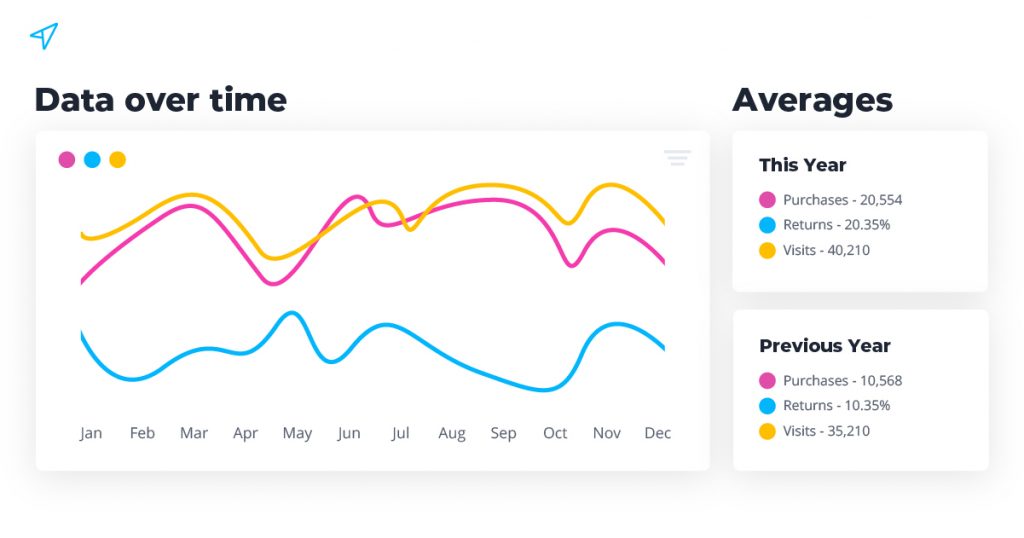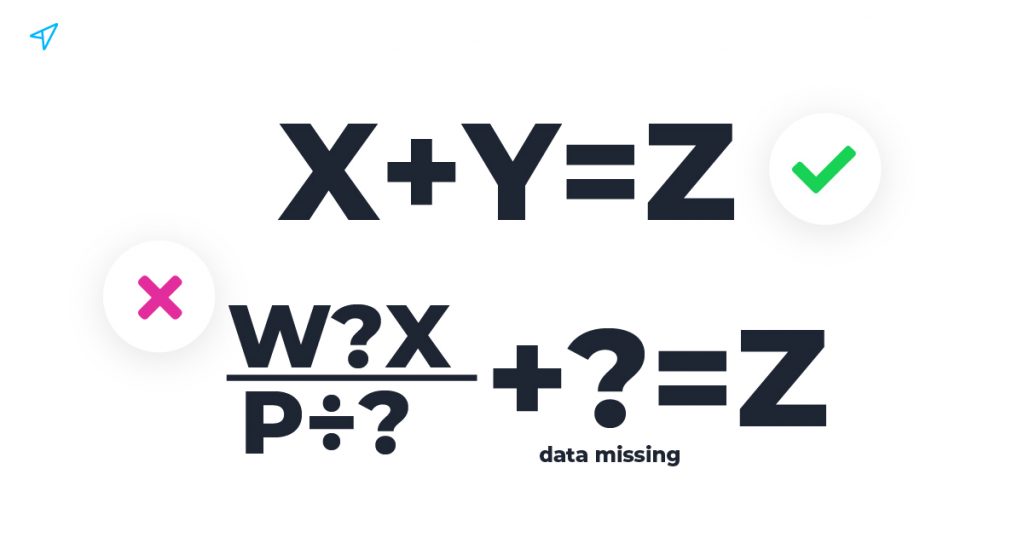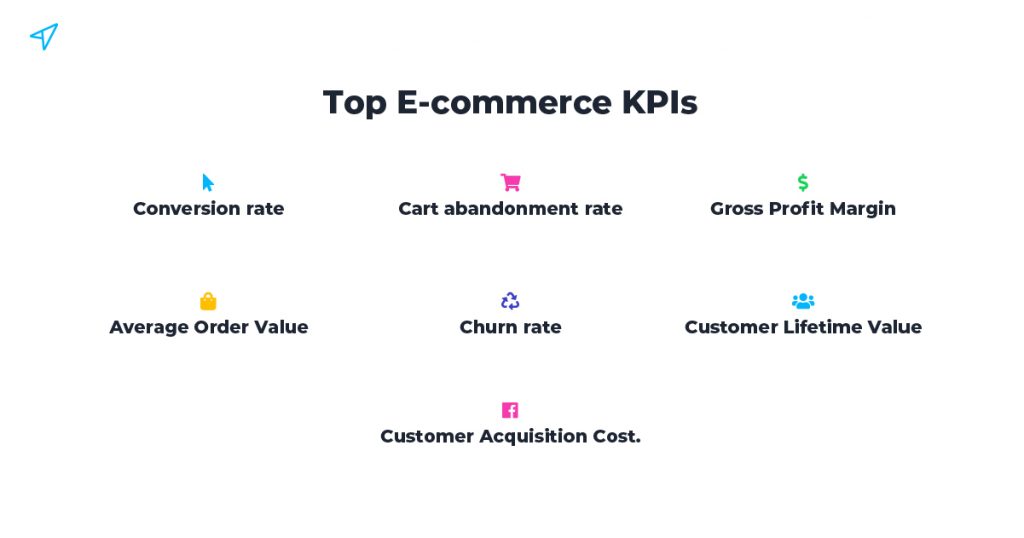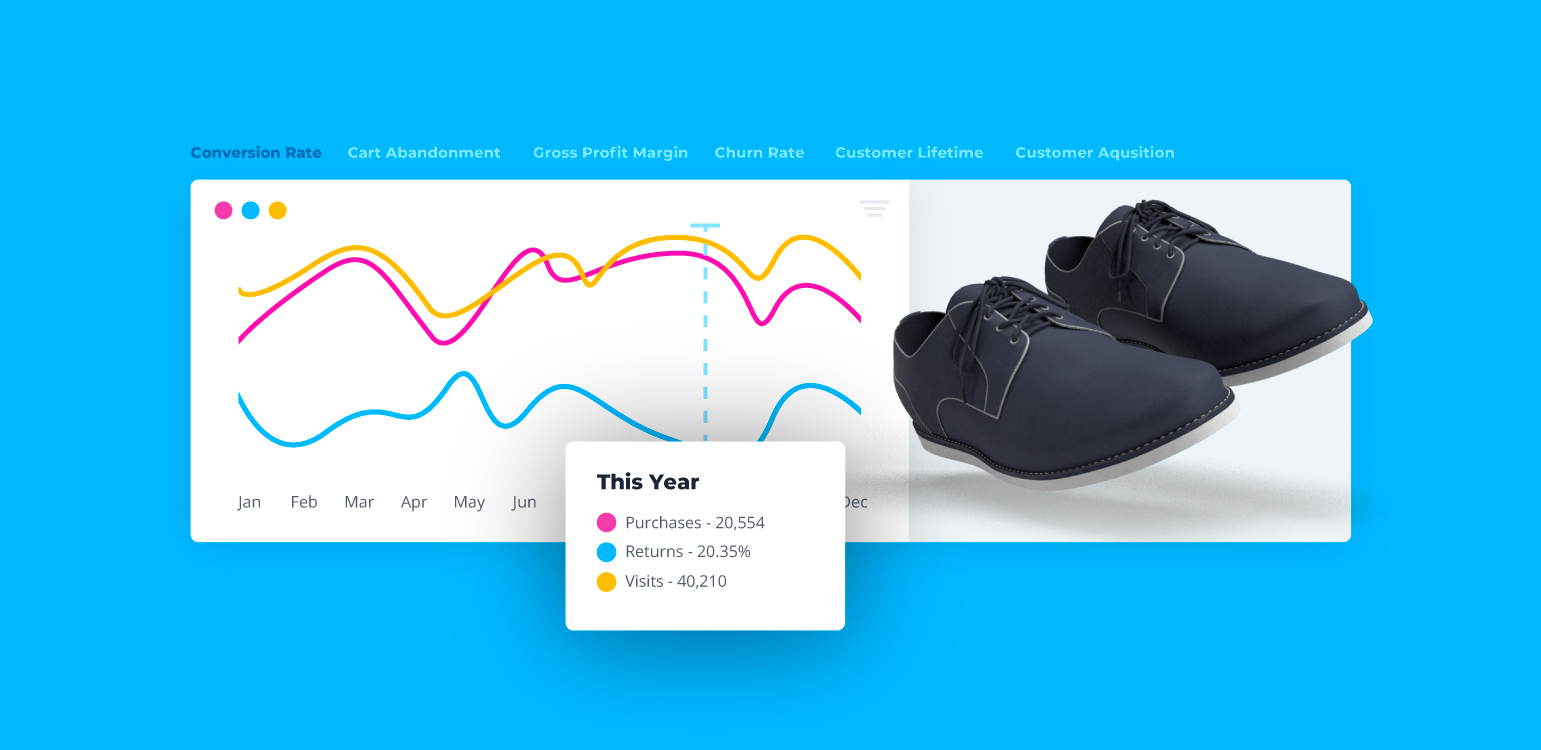Ecommerce businesses are a goldmine for data. Online stores or Ecommerce sites work by subsisting on numerous data-centered processes and subprocesses. In business, key performance indicators are crucial aspects of analytics that give great insight.
They are metrics, that is, a measure that reveals how well a company or business has performed based on already established goals and objectives. Top Ecommerce KPIs, just as they imply, communicate the most important metrics of your Ecommerce marketing strategy.
Clearly, Key performance indicators, KPIs, differ from basic metrics which can represent a measure of different things. There are tons of metrics out there. However, for online business owners, there’s a lot of rewards to be gained with those very important metrics.
KPIs help you to understand significant aspects of your business, hence, you are better able to make strategic and informed decisions. In ecommerce, these aspects range from business operations regarding sales and marketing, to manufacturing, project management, and customer service.
Here are some essential characteristics to look out for when selecting top ecommerce KPIs for your online business.
- Timeliness
- Actionable
- Definability and quantifiability; ability to be measured accurately
- Must have a significant impact on the bottom line
Timeliness
For a KPI to be an effective measure of your business’s progress and a medium of great insight, it must be useful in real-time. While a KPI can be predictive or revealing in nature, timely results would aid in implementing strategies from insights gleaned. Usually, trend tracking is made possible by juxtaposing or comparing old and real-time data.

Actionable
It’s not simply about tracking key performance indicators endlessly. The real value to be obtained begins from the point where your business can utilize insights from data analyzed. This way, you know what works and what doesn’t, also, whether to redirect or intensify certain actions. Overall, the top KPIs should stimulate action.

Definability and Quantifiability
All KPIs are essentially quantifiable although KPIs can also be qualitative. It is important to be able to accurately track all the data involved in creating an indicator. The quality of being well-defined and quantifiability go hand in hand, as it is impossible to quantify that which is lacking in already defined parameters. The most effective KPIs are also simple and easy to calculate.

Must have a significant impact on the bottom line
An important characteristic is how well a KPI impacts your top goals and relates to the bottom- line. The best key performance indicators are not haphazard. While, on average, there are some KPIs that remain primarily essential to every ecommerce business, top ecommerce KPIs must aid in achieving your primary goals and objectives.

Top Ecommerce KPIs
- Conversion Rate
- Cart Abandonment Rate
- Gross Profit Margin
- Average Order Value
- Churn Rate
- Customer Lifetime Value
- Customer Acquisition Cost

1. Conversion Rate
This KPI is usually expressed in percentage. It is actually a very indicative measure because it describes how well your store engages its site visitors. Engagement can range from a visitor making purchases, subscribing to your newsletter, or doing something as seemingly mundane as posting a review.
Is it relatively easy for a customer to check out of your webstore without taking any action? Well, this informs you to a wide extent how effective features in your online store such as the landing page and call-to-action are.
On average, the conversion rate for online shoppers ranges from 2.89 and 3.31 globally. The great part of this KPI Is the fact that it can be segmented. i.e. the conversion rate of a page, collection of pages, category, or an entire site can be obtained.
This way, tweaks aimed at improving the conversion rates of specific aspects of your online store can be made easily. What’s best? These usually result in huge profits especially when the focus is made on improving each step of the marketing funnel.
How is the conversion rate calculated? It can be gotten by dividing the number of targeted or specific conversions by the number of visitors recorded in your store. As it is expressed in percentage, this calculated value should be multiplied by a hundred to obtain the final value.
For example, if the targeted conversion rate is that of newsletter signups and 50 signups are recorded from 1,000 website visitors, the conversion rate is 5%.
2. Cart Abandonment Rate
The act of cart abandonment has become a very much normalized quirk of 21st-century ecommerce shoppers of ecommerce stores. The average cart abandonment rate ranges between 60-80%. It describes a scenario where a prospect or customer makes no further attempt to complete an order process either via a shopping cart or web form, after 40 minutes.
They occur for a host of reasons. For example, high friction in a store’s checkout process, unexpected costs that may pop up along the way, and a slow website can amount to a cart being abandoned.
This KPI provides insight about opportunities missed on closing deals and boosting revenue which according to BI intelligence, are remediable. This works by capitalizing on effective digital marketing strategies or campaigns. The cart abandonment rate can be calculated with the use of a straightforward mathematical expression which can also be rendered in percentage.
It is gotten by dividing the number of purchases completed by the number of shopping carts created. To have this rate expressed in percentage, subtract the number arrived at by one and then multiply by a hundred.
For instance, if you record 100 completed purchases from 300 created shopping carts, the calculated cart abandonment rate in percentage will be 66.7%.
3. Gross Profit Margin
Getting your online business to thrive and flourish goes further than meeting your customers’ needs and establishing trust along the way, though those remain essential.
However, how healthy is a business if it continually runs at loss? It’s only a healthy business that can achieve continuity while still providing value. The profit, loss, or breakeven status of a business is not something to simply put aside.
This is why the gross profit margin KPI is very important. How else can you tell what’s left after incurring the costs that are peculiar to running a business? The Gross profit margin provides information about the actual amount you make, not your revenue, but the money left after all the costs have been removed.
According to a study by MarketingSherpa ecommerce, for companies earning up to $10k, the average gross margin was 30%. To calculate it, you need to know your total revenue and the costs of goods sold.
The latter includes costs incurred while running basic business operations and processes as well as paying employee salaries. With these, you can calculate your profit, which is simply these costs subtracted from your total revenue.
Then, to obtain the KPI in percentage, divide the profit calculated by the total revenue gotten, and finally, multiply by 100.
4. Average Order Value
The Average Order Value or AOV describes how much on an average, a customer spends when they place a single order. This KPI is important because it is strongly correlated to revenue and can be an avenue to getting your customers to spend more. When you receive more money per customer, you gain higher customer acquisition costs while your profits remain maintained.
To calculate the AOV based on a specific period, divide your total revenue by the total number of orders recorded.
5. Churn Rate
This KPI is can be indicative of what works and what doesn’t. This is because it measures customer retention to a wide extent. The churn rate describes the rate at which customers stop or fail to continue to engage with a brand or business. It could be in terms of halting purchases or canceling subscriptions.
To obtain the churn rate of your business, divide the number of churned customers over a specific period by the number of customers recorded at the beginning of that period.
6. Customer Lifetime Value
This as it implies, simply indicates the value or worth of a customer as they relate with your brand overtime. It is important because strategies aimed at improving this KPI, focus on strengthening brand to customer relationships, establishing trust and gaining loyal customers.
As this value is usually quantifiable, it can be expressed as the average net profit that a customer is predicted to generate over the course of your business relationship. It can also be an indication of the customer retaining strengths of your business.
To obtain the CLV of your business, you need to know your average order value, average number of times a customer makes purchases per annum and the average customer retention in a specified period. With these, you can calculate the customer lifetime value by multiplying the three averages.
7. Customer Acquisition Cost
The customer acquisition cost (CAC) gives a measure of how much it takes to buy a customer. It calculates the amount utilized from every step of the sales and marketing funnel till a customer makes that final purchase. Having adequate knowledge of this KPI enables you to budget appropriately and make strategic decisions which would lead to reduced costs, overall.
You must know how much it takes to convert a prospect into a paying customer and whether or not an increase in this would translate to increased profits. To obtain the CAC, the total amount of money spent on sales and marketing should be divided by the total number of customers those activities delivered.
Top Ecommerce KPIs – Conclusion
For your online business to thrive, you have to know what works, what doesn’t and take actionable steps to ensure that things do work. Top Ecommerce KPIs are like telltale signs or sign posts on your roadmap. There are valuable insights to be gained from them, therefore, they remain essential to your strategies and the growth of your business.
Need to chat about your e-commerce marketing strategy?
More than 10,000 e-commerce marketers use Maropost to engage with their prospects and customers through emails, SMS, social media and more. We’re here to help you growing your business!
Chat Now

